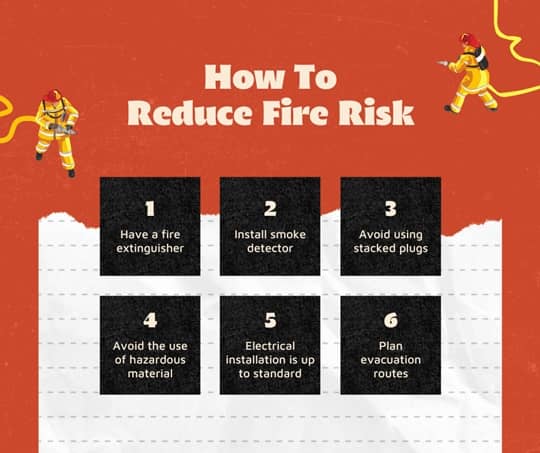Creating a Family Fire Escape Plan
No one ever expects a fire in their home. It's estimated by the CDC that more than 350,000 homes catch fire each year. We don't know when tragedy will strike, so it's vital that each household be prepared for it to happen to them. Everyone should have a fire extinguisher, smoke alarms, and escape ladders for any rooms on the second floor or higher.

Every family also needs to have an escape plan. Fire escape plans will be determined by the home's layout, and by the ages and physical abilities of the people who live there. Homes with babies or very young children have different needs than a home occupied only by healthy adults. These plans can be made by following a few simple steps. No matter who lives in the home, everyone must practice their escape plans!
Mapping Out the Home Layout
-
Draw or print a layout of the floor plan of the home.
-
Mark where people sleep, where the smoke alarms are located, and the best exit for each part of the house.
-
Each room needs a main exit point and a second exit point. For example, if the doorknob is hot, it's best to escape through the window.
-
Put copies of the fire escape plan in guest rooms and in areas like basements or attic play rooms.
Identifying Exits
-
Every home needs two exits.
-
Homes with more than one story needs two exits for each story of the home.
-
The two exists should be on opposite ends of the home from each other. Having the exits on opposite sides reduces the chance that both will be blocked and trap the home's residents inside the burning building.
-
It's best if both exits are doors, but windows are also good secondary exits.
-
Windows need to be working in condition. They should be easy to open.
-
It's also important that it's easy to leave the house through the window. Windows that are high up off the ground should have escape ladders stowed beneath them.
-
All family members should practice opening the ladders and using them.
-
Emergency exits on the second floor or above should not depend on being able to use the stairs. Stairs often aren't able to be used in a fire.
Deciding on a Meeting Place
-
Part of making a fire escape plan is picking a safe place for the family to meet back up.
-
The best meeting place is in an open space that's able to be seen from the home.
-
One reason why it's so important to have one meeting place that can be seen from the home is that it's important for the family to know who is out of the house. This can prevent someone from going back into a burning building to attempt to rescue someone who is already safely out of the building. It also allows the person calling 911 to give accurate information about if anyone is still in the home.
-
The first person at the meeting place needs to call 911. If they don't have a phone, then as soon as two people are out, one of them should go to a neighbor and call for help.
-
Everyone should stay together at the meeting place until the fire department arrives after 911 was called.
Practice, Practice, Practice
-
Families should have fire drills at least every two months.
-
The fire drill should start with the smoke alarm sounding.
-
Adults can set up different obstacles so that the family can practice their different escape routes.
-
Part of the drill is practicing how to evaluate if a door is safe to open and how to stay low on the floor while moving through the home.
-
Fire drills should take place at different times of the day and night.
-
Sometimes fire drills happen with all the lights out because often the electricity goes out during a fire.
-
Each fire drill should end with the family assembled at their meeting point.
Check Smoke Alarms
-
Smoke alarms should be tested each month.
-
Make sure all family members know that the smoke alarm is being tested.
-
Have family members stand in different parts of the house to make sure the alarm can be heard throughout the home.
-
To test the alarm, push down and hold the test button on the outside of the alarm. After a couple of seconds, a very loud siren-like noise should come from the alarm.
-
If the alarm starts beeping or it sounds an alarm when there isn't any smoke or fire, try changing the batteries. If that doesn't work, the smoke alarm should be replaced at once.
-
Change the batteries twice a year. Most people do this on the day the time changes in the fall and spring.
By: Jim Olenbush
